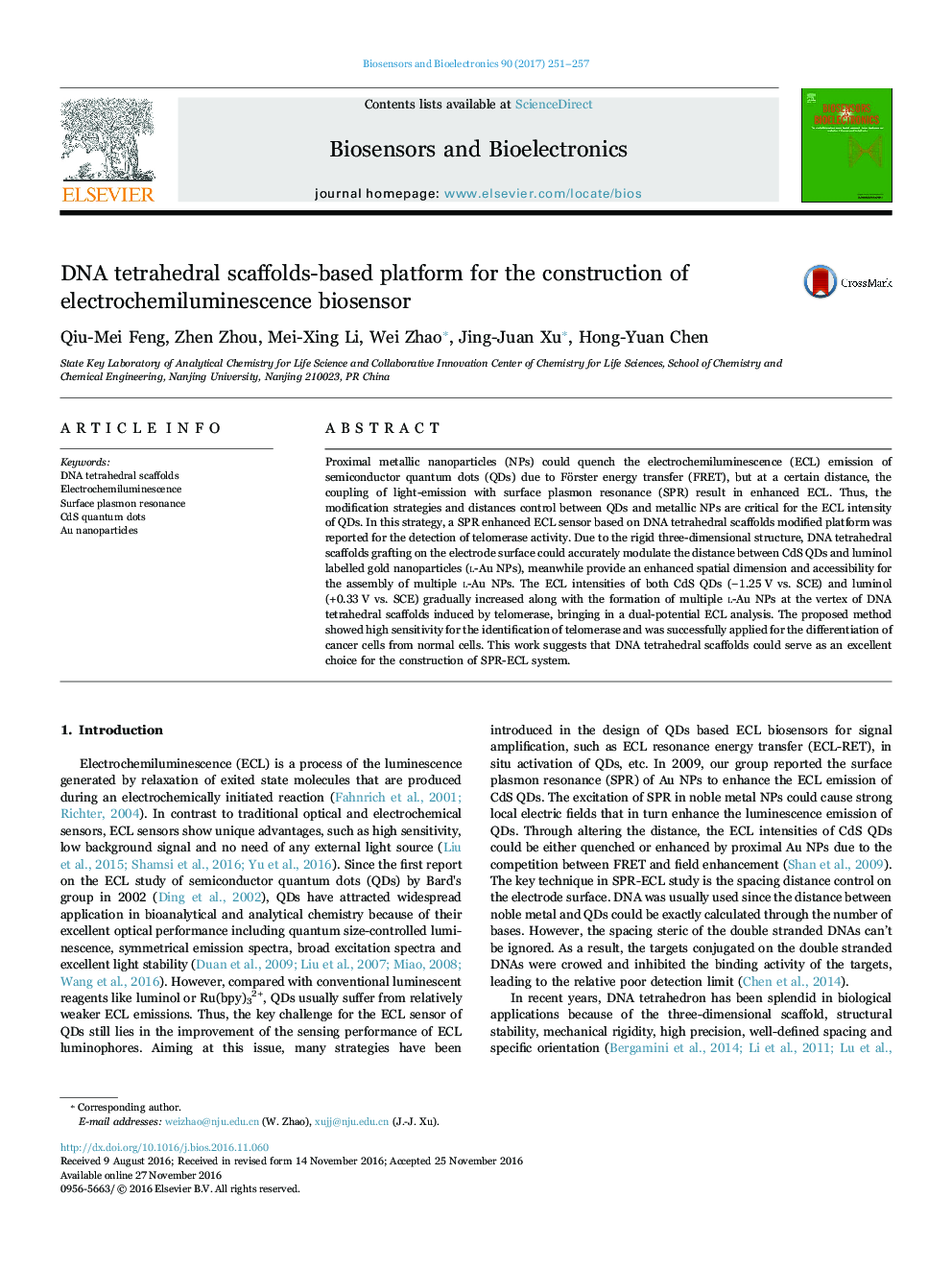| Article ID | Journal | Published Year | Pages | File Type |
|---|---|---|---|---|
| 5031255 | Biosensors and Bioelectronics | 2017 | 7 Pages |
Abstract
Proximal metallic nanoparticles (NPs) could quench the electrochemiluminescence (ECL) emission of semiconductor quantum dots (QDs) due to Förster energy transfer (FRET), but at a certain distance, the coupling of light-emission with surface plasmon resonance (SPR) result in enhanced ECL. Thus, the modification strategies and distances control between QDs and metallic NPs are critical for the ECL intensity of QDs. In this strategy, a SPR enhanced ECL sensor based on DNA tetrahedral scaffolds modified platform was reported for the detection of telomerase activity. Due to the rigid three-dimensional structure, DNA tetrahedral scaffolds grafting on the electrode surface could accurately modulate the distance between CdS QDs and luminol labelled gold nanoparticles (L-Au NPs), meanwhile provide an enhanced spatial dimension and accessibility for the assembly of multiple L-Au NPs. The ECL intensities of both CdS QDs (â1.25Â V vs. SCE) and luminol (+0.33Â V vs. SCE) gradually increased along with the formation of multiple L-Au NPs at the vertex of DNA tetrahedral scaffolds induced by telomerase, bringing in a dual-potential ECL analysis. The proposed method showed high sensitivity for the identification of telomerase and was successfully applied for the differentiation of cancer cells from normal cells. This work suggests that DNA tetrahedral scaffolds could serve as an excellent choice for the construction of SPR-ECL system.
Related Topics
Physical Sciences and Engineering
Chemistry
Analytical Chemistry
Authors
Qiu-Mei Feng, Zhen Zhou, Mei-Xing Li, Wei Zhao, Jing-Juan Xu, Hong-Yuan Chen,
